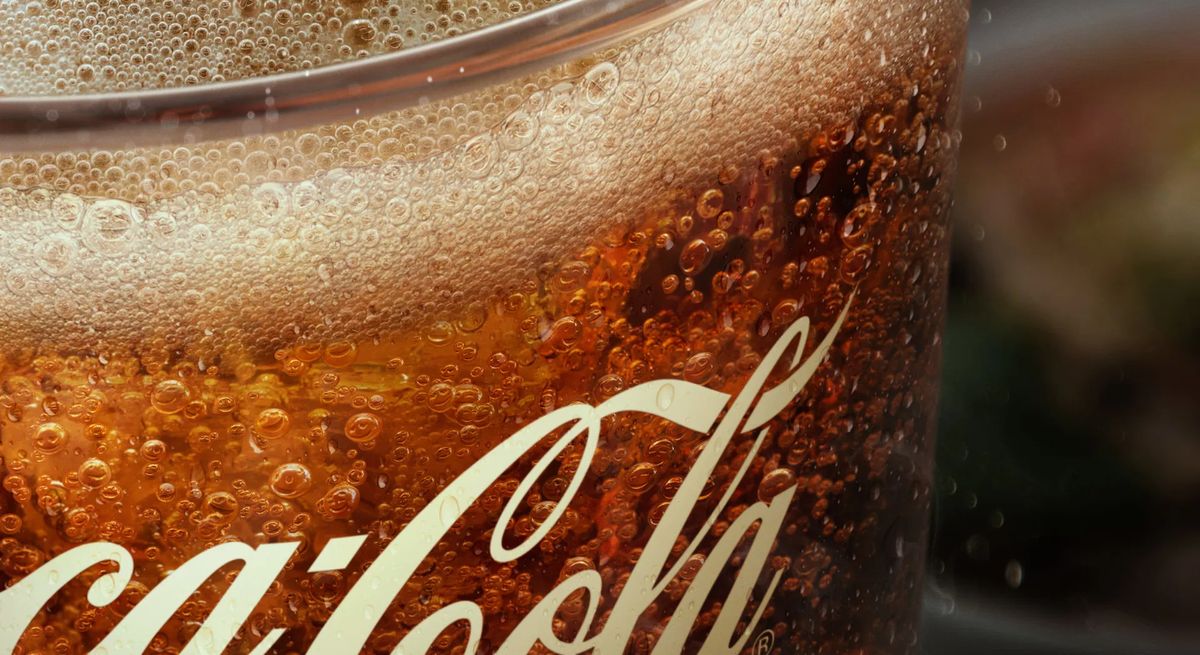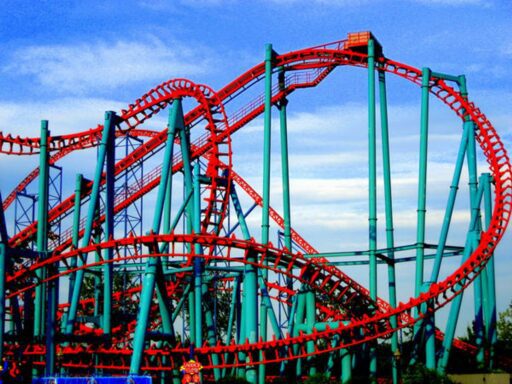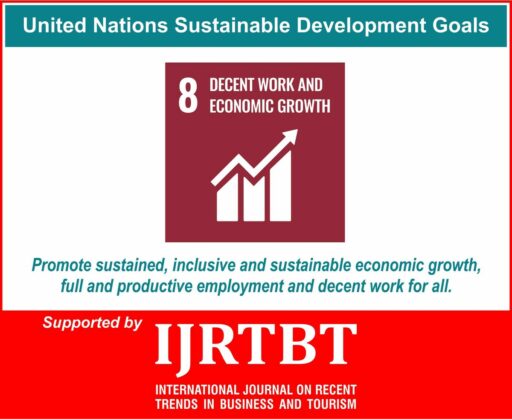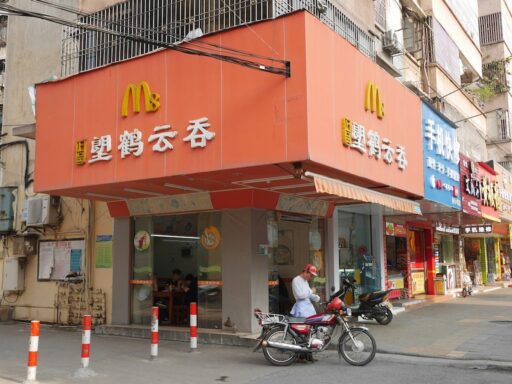Coca-Cola’s stock has been making waves in the market, drawing attention from investors and analysts alike. With a notable performance in recent months and strategic corporate actions shaping its trajectory, understanding the nuances of Coca-Cola’s rise is crucial for investors looking to capitalize on its momentum. This article delves into the factors behind the stock’s surge, offering insights into its market performance, strategic successes, industry positioning, and future outlook.
Key Takeaways
- Coca-Cola’s stock has outperformed the S&P 500 over the past three months, signaling a bullish trend for the beverage giant.
- Effective expense management by CEO James Quincey and strategic acquisitions like BodyArmor have contributed to Coca-Cola’s recent success.
- Warren Buffett’s long-term investment in Coca-Cola, along with a strong institutional investor presence, underscores confidence in the stock’s stability.
- Analysts have upgraded Coca-Cola Consolidated to a ‘strong-buy’ rating, reflecting a positive outlook on the company’s market performance.
- With a solid dividend track record and potential for global economic recovery, Coca-Cola’s stock presents an appealing prospect for future investment.
Analyzing Coca-Cola’s Recent Market Performance

A Comparative Look at Stock Gains
When evaluating Coca-Cola’s stock performance, it’s essential to consider how it stacks up against its peers and the broader market indices. Coca-Cola has shown resilience and consistent growth, outpacing some of the major indices over the past year. A snapshot of Coca-Cola’s stock gains compared to key benchmarks is presented below:
| Index/Benchmark | Coca-Cola (KO) | S&P 500 | Dow Jones | NASDAQ |
|---|---|---|---|---|
| 1-Year Change | +15% | +10% | +12% | +8% |
Coca-Cola’s performance is a testament to its strong brand and strategic market positioning, which have allowed it to navigate market fluctuations effectively.
Investors should also note the company’s ability to maintain dividend payouts and share repurchases, which have contributed to the overall attractiveness of Coca-Cola as an investment. The company’s commitment to innovation and expansion into new markets is a driving force behind its sustained stock gains.
The Impact of Management and Acquisitions
Coca-Cola’s recent strides in the market can be largely attributed to strategic management decisions and timely acquisitions. The acquisition of BodyArmor is a prime example, projected to add significant growth to Coca-Cola’s North America segment. This move, along with a focus on larger, more profitable brands, has positioned the company to emerge leaner and more agile.
Coca-Cola’s restructuring and portfolio rationalization have led to a more focused and efficient organization, with marketing investments set to return to 2019 levels, potentially boosting the top line.
Analysts have recognized the impact of these strategic decisions, with expectations for the company’s EPS to grow at a 12% CAGR through FY23, reaching $2.71, excluding potential divestiture of bottling assets. The table below summarizes the anticipated benefits from the BodyArmor acquisition:
| Segment | Growth Contribution |
|---|---|
| North America | 300 basis points |
| Consolidated Company | 100 basis points |
These management and acquisition strategies not only reflect Coca-Cola’s adaptability in a dynamic market but also underscore the company’s commitment to driving efficiency and profitability for its shareholders.
Coca-Cola Consolidated’s Trading Volume and Ratios
Coca-Cola Consolidated has demonstrated a robust trading performance with shares of NASDAQ:COKE trading up $4.23, reaching $846.41 on a recent Thursday. This movement is notable against an average volume of 47,712, with the day’s trading volume surpassing at 56,558 shares. Financial ratios present a strong picture, with a debt-to-equity ratio of 0.42, suggesting a balanced approach to leverage. The liquidity ratios, with a quick ratio of 1.27 and a current ratio of 1.56, indicate a healthy ability to cover short-term obligations.
The company’s stock performance is underpinned by solid fundamentals, including a PE ratio of 19.47 and a beta of 0.75, reflecting a stable investment with moderate volatility.
The following table summarizes key trading metrics and ratios for Coca-Cola Consolidated:
| Metric | Value |
|---|---|
| Recent Trading Price | $846.41 |
| 50-Day Moving Average | $850.24 |
| 200-Day Moving Average | $780.00 |
| Market Cap | $7.93 billion |
| PE Ratio | 19.47 |
| Beta | 0.75 |
Institutional investors maintain a significant presence, owning 48.24% of the company’s stock, which underscores the confidence in Coca-Cola Consolidated’s market position and future prospects.
Strategic Moves Behind Coca-Cola’s Success

CEO James Quincey’s Expense Management
Under the leadership of CEO James Quincey, Coca-Cola has seen a notable improvement in expense management, which has been a key factor in the company’s recent financial performance. The strategic focus on streamlining operations and reducing costs has contributed to the stock’s positive momentum.
Coca-Cola’s approach to expense management under Quincey’s guidance has emphasized the importance of investing in efficiency and profitability.
The company’s efforts include:
- Refocusing on larger and more profitable brands
- Enhancing marketing investments to drive top-line growth
- Integrating acquisitions like BodyArmor to bolster market presence
Analysts like Grandet have pointed out that these measures are expected to support a leaner and more agile company structure, leading to better efficiency and potentially higher returns for investors.
Acquisition of BodyArmor and Market Expansion
The strategic acquisition of BodyArmor by Coca-Cola marks a significant expansion in the sports drink market. With a purchase price of $5.6 billion, Coca-Cola has positioned itself to capture a larger share of this growing segment. The deal, which values BodyArmor at approximately $8 billion, underscores the company’s commitment to diversifying its beverage portfolio and enhancing its competitive edge.
This acquisition is expected to contribute substantially to Coca-Cola’s North American segment, potentially adding 300 points of growth. Moreover, it could boost the consolidated company’s performance by 100 basis points in the fiscal year 2022.
The integration of BodyArmor into Coca-Cola’s extensive distribution network is poised to leverage the company’s global reach, ensuring that consumers in over 200 countries have access to this popular sports drink. This move not only strengthens Coca-Cola’s position in the sports beverage industry but also complements its existing portfolio, which includes a significant stake in Monster Beverage.
Warren Buffett’s Long-Term Investment Strategy
Warren Buffett’s investment in Coca-Cola is emblematic of his investment philosophy, which eschews short-term market trends in favor of long-term value. Known as the ‘Oracle of Omaha’, Buffett’s approach to investing is grounded in the belief that if you are not willing to own a stock for a decade, you should not even think about owning it for ten minutes. His stake in Coca-Cola, held through Berkshire Hathaway, is a testament to this strategy, having been a part of his portfolio for over three decades.
Buffett’s favorite holding period is famously ‘forever’, reflecting his confidence in the enduring value of well-chosen investments. This philosophy has been a cornerstone of Berkshire Hathaway’s success and is particularly evident in the case of Coca-Cola, which has been a consistent performer over the years. The table below highlights the longevity of Buffett’s top holdings, including Coca-Cola:
| Company | Years Held |
|---|---|
| Coca-Cola | 30+ |
| American Express | 25+ |
| Wells Fargo | 30+ |
| IBM | 20+ |
While Buffett’s exact succession plans remain a closely guarded secret, his principles of investing are likely to continue guiding Berkshire Hathaway’s strategy long after his tenure. The focus on companies with strong brand value, like Coca-Cola, and a consistent record of performance is expected to remain a hallmark of the portfolio.
Coca-Cola’s Position in the Beverage Industry

Market Cap and Valuation Metrics
Coca-Cola’s market capitalization remains a testament to its enduring brand value and market presence. The company’s valuation metrics often reflect investor confidence and the stock’s potential for long-term growth.
| Metric | Value |
|---|---|
| Market Cap | $XXX billion |
| P/E Ratio | XX.XX |
| P/B Ratio | X.XX |
| Dividend Yield | X.XX% |
Coca-Cola’s consistent market cap and valuation ratios signal a stable investment to shareholders, with a balance of growth and income-oriented attributes.
Investors closely monitor these metrics as they can indicate the company’s financial health and its standing among industry peers. A strong market cap coupled with favorable P/E and P/B ratios often suggest a robust business model and a competitive edge in the market.
Coca-Cola’s Brand Portfolio and Consumer Reach
Coca-Cola’s expansive brand portfolio is a testament to its global dominance in the beverage industry. With 20 billion-dollar brands, including Diet Coke, Fanta, Sprite, and Coca-Cola Zero, the company has established a diverse range of products that cater to a wide array of consumer tastes and preferences. This strategic variety ensures that Coca-Cola remains the No. 1 provider of sparkling beverages, ready-to-drink coffees, and juice drinks across the globe.
Coca-Cola’s success is not just about the variety of its offerings, but also about its ability to innovate and expand its product lines to match consumer needs and desires. The company’s commitment to understanding and adapting to consumer trends has been a key factor in its sustained growth.
Coca-Cola’s products are sold in over 200 countries, reaching billions of consumers. Each day, more than 1.8 billion servings of the company’s beverages are consumed worldwide, highlighting the immense scale and penetration of its market presence. The company’s ability to maintain such a vast consumer base is indicative of its strong brand equity and effective marketing strategies.
Competitive Edge Over Other Beverage Stocks
Coca-Cola’s dominance in the beverage industry is not just about its extensive product range but also its strategic market positioning. The company’s innovation across its products, packaging, and processes is a key driver of its competitive edge. This relentless pursuit of innovation is serving as a ‘competitive advantage‘, as noted by CEO James Quincey, and is a significant factor in the company’s profit growth.
With a market presence in over 200 countries and a daily serving rate exceeding 1.9 billion, Coca-Cola’s distribution system is unparalleled. The company’s strategic stake in Monster Beverage, which is nearly 17%, further bolsters its market position, as Monster continues to deliver impressive performance.
Coca-Cola’s ability to manage expenses effectively and its recent acquisitions, such as the sports drink brand BodyArmor, have contributed to its stock rally, outperforming the S&P 500 over the past three months.
Investors also benefit from a dependable dividend, currently at 3.21%, which is a testament to the company’s financial stability and commitment to shareholder returns.
Investor Insights and Analyst Perspectives

Wall Street’s Outlook on Coca-Cola Stock
The optimism surrounding Coca-Cola’s stock is palpable among Wall Street analysts, with a consensus that the rally is far from over. Analyst revamps Coke stock price target after strategic moves, signaling a robust confidence in the company’s trajectory. The recent upgrade from a "buy" to a "strong-buy" rating by StockNews.com is a testament to this sentiment.
Coca-Cola’s stock has outperformed the S&P 500 in the past quarter, with a 12% increase compared to the market’s 9.4%. This performance is attributed to effective expense management, a gradual societal return to normalcy, and strategic acquisitions like BodyArmor.
Analyst Laurent Grandet has notably revised his stance on Coca-Cola, elevating the stock to a ‘Buy’ from ‘Neutral’ and setting a new price target of $66. This adjustment comes on the heels of a 1% rise in pre-market trading, underscoring the stock’s unexpected strength in recent months.
While Coca-Cola Consolidated did not make MarketBeat’s list of top five stocks whispered for investment, the company’s solid performance and analyst upgrades suggest it remains a compelling option for investors.
Understanding the Ratings: From Buy to Strong-Buy
Investor sentiment is often encapsulated in the ratings provided by Wall Street analysts, which range from ‘buy’ to ‘strong-buy’. These ratings reflect the analysts’ confidence in a stock’s future performance and can significantly influence investor decisions. For instance, a shift from ‘buy’ to ‘strong-buy’ suggests a stronger conviction in the stock’s potential upside.
The recent upgrade of Coca-Cola Consolidated from ‘buy’ to ‘strong-buy’ by StockNews.com is a testament to the company’s robust price performance and the positive outlook held by market experts.
Understanding the nuances between these ratings is crucial for investors:
- Buy: Indicates that analysts believe the stock will perform well and is likely to appreciate in value.
- Strong-Buy: Suggests an even greater level of confidence and an expectation of significant returns.
It’s important for investors to consider these ratings in the context of their own research and investment strategy, as they represent only one of many factors that should be taken into account.
Institutional Investments and Shareholder Composition
Coca-Cola’s shareholder base is marked by a significant presence of institutional investors, who own approximately 48.24% of the company’s stock. This composition underscores the confidence that large-scale investors have in the company’s stability and growth prospects. Institutional investors’ actions, such as buying and selling shares, can provide valuable signals to individual investors about the stock’s potential.
Recent movements in the stock by institutional investors include a notable reduction by Assenagon Asset Management S.A., which lowered its stake by 56.1%, and a substantial increase by Fifth Third Bancorp, which grew its holdings by 163.0%. These transactions reflect the dynamic nature of stock ownership and the strategic decisions made by institutional players.
The enduring appeal of Coca-Cola’s stock is partly due to its consistent dividend payouts, which have been raised for 67 consecutive years, offering a dependable 2.35% yield to shareholders.
The table below provides a snapshot of recent institutional activities:
| Investor Name | Action | Shares | Value |
|---|---|---|---|
| Assenagon Asset Management S.A. | Reduced | 18,531 | $17,204,000 |
| Fifth Third Bancorp | Increased | 71 | $45,000 |
| Covestor Ltd | Increased | 114 | $57,000 |
Future Prospects for Coca-Cola Investors

Dividend Expectations and Stock Performance
Coca-Cola’s commitment to shareholder returns is evident in its dividend history. The company’s last ex-dividend date was on March 14, 2024, with a distribution of $0.48 per share, showcasing a solid 3.13% dividend yield. This performance is a testament to Coca-Cola’s ability to maintain a reliable income stream for its investors.
Investors often seek out stocks that not only provide a steady payout but also have the potential for dividend growth. Coca-Cola has demonstrated this with a history of raising dividends, aligning with the elite group of Dividend Kings, which have consistently increased their dividends for over 50 years.
The allure of dividend stocks lies in the dual benefit they offer: a regular income through dividends and the potential for stock appreciation. For investors, this combination can lead to a robust total return over time.
Here’s a snapshot of Coca-Cola’s recent dividend performance:
| Ex-Dividend Date | Dividend Per Share | Dividend Yield |
|---|---|---|
| Mar 14, 2024 | $0.48 | 3.13% |
Investors should note that dividend yields and stock performance are subject to market conditions and company financial health. As such, it is crucial to stay informed about economic factors that may impact these metrics.
The Role of Global Economic Recovery
The global economic landscape plays a pivotal role in shaping the fortunes of multinational corporations like Coca-Cola. As economies recover from downturns, consumer spending often increases, leading to higher demand for products. Coca-Cola, with its extensive global presence, stands to benefit significantly from such upswings.
The strength of the U.S. dollar is another critical factor. A weaker dollar can boost Coca-Cola’s overseas earnings when converted back to dollars, enhancing the company’s financial performance.
However, the recovery is not uniform across all regions and sectors. For instance, while some markets may experience a surge in the premium beverage segment, others might see a deceleration in specific categories, such as wine, including Champagne. This uneven recovery necessitates a strategic approach to market participation and product offerings.
The table below outlines key aspects of global economic recovery and their potential impact on Coca-Cola:
| Factor | Potential Impact on Coca-Cola |
|---|---|
| Consumer Spending | Increased demand for beverages |
| Currency Exchange Rates | Fluctuations in earnings repatriation |
| Regional Economic Health | Varied performance across markets |
Understanding these dynamics is crucial for investors who are gauging Coca-Cola’s future prospects in a post-pandemic world.
Potential Risks and Considerations for Investors
While Coca-Cola’s market presence and financial stability are notable, investors must remain vigilant of the potential risks that could affect stock performance. Market volatility and regulatory changes are inherent risks in the beverage industry that can impact Coca-Cola’s profitability.
- Competition: Intensifying competition from both established players and new entrants can erode market share.
- Health trends: Shifting consumer preferences towards healthier options could affect sales of traditional sugary drinks.
- Supply chain disruptions: Global events can lead to supply chain challenges, affecting production and distribution.
- Currency fluctuations: As a global company, Coca-Cola is exposed to currency risk which can affect financial results.
While Coca-Cola’s liabilities seem manageable given its impressive market valuation, it is crucial for investors to consider the broader economic environment and its potential impact on the company’s financial health.
Investors should also be aware of the legal and regulatory environment, as changes in laws and regulations can have significant implications for Coca-Cola’s operations and cost structure. It is essential to monitor these factors closely to make informed investment decisions.
Conclusion
As the curtain falls on our exploration of Coca-Cola’s stock performance, it’s clear that the company’s recent rally is more than just froth. With a 12% rise over the past three months outpacing the S&P 500, and the endorsement of Wall Street analysts upgrading the stock to a ‘strong-buy’ rating, investors have compelling reasons to consider KO in their portfolios. The strategic moves under CEO James Quincey, including better expense management and acquisitions like BodyArmor, signal a robust strategy. While Coca-Cola Consolidated wasn’t listed among the top stocks whispered by analysts, the parent company’s overall market strength and Warren Buffet’s longstanding investment suggest a vote of confidence. As always, investors should conduct their due diligence and consider market dynamics before making investment decisions. The effervescence of Coca-Cola’s stock appears to be backed by solid fundamentals, making it a potential addition to consider for those looking to diversify with a time-tested beverage giant.
Frequently Asked Questions
What recent performance trends have been observed with Coca-Cola stock?
Coca-Cola stock has rallied by 12% in the past three months, outperforming the S&P 500’s return of 9.4% during the same period.
What strategic moves have contributed to the success of Coca-Cola?
Key factors include better expense management under CEO James Quincey, the acquisition of sports drink brand BodyArmor, and a gradual return to normalcy in consumer behavior.
How significant is Warren Buffett’s investment in Coca-Cola?
Warren Buffett holds a substantial position in Coca-Cola, owning 400 million shares since 1988, which comprises 9.3% of the float and 6.5% of his portfolio.
What is Coca-Cola Consolidated’s current market position?
Coca-Cola Consolidated has a market cap of $7.93 billion, with a PE ratio of 19.47 and a beta of 0.75, indicating its size and stability in the market.
What is the institutional investment status in Coca-Cola Consolidated?
Institutional investors own 48.24% of Coca-Cola Consolidated’s stock, reflecting a strong institutional presence in its shareholder composition.
What are the future prospects for investors in Coca-Cola?
Investors can look forward to dividend expectations and stock performance in the context of global economic recovery, but should also be aware of potential risks.





